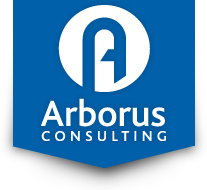Packaged rooftop units (RTUs) are one of the most common HVAC systems in use today, serving over 60% of the commercial building floor area in the US. These systems deliver heating and cooling to a space using constant-speed supply fans and provide outdoor air at a constant design rate. As the design outdoor air rate is typically calculated based on the maximum occupancy of the space, the building may be over-ventilated when not fully occupied, incurring unnecessarily high energy costs. Retrofitting these systems with variable-speed fans and improved controls can reduce the outdoor air conditioning load and save space heating, cooling, and fan energy costs.
In a typical packaged RTU, the constant-volume supply fan operates continuously during occupied hours, providing outdoor air and heating or cooling to a space. The RTU furnace or cooling coils turn on in response to zone thermostat signals, and turn off when the thermostat setpoint has been reached. The RTU economizer is set to the minimum OA damper setting or 100% open based on a single dry-bulb outdoor air setpoint. The CATALYST Control System from Transformative Wave Technologies Inc. provides a variable-speed retrofit for constant-speed RTUs, as well as advanced air-side economizer controls and demand controlled ventilation (DCV). The CATALYST integrated economizer controls use a differential dry-bulb strategy, which controls the outdoor air intake and the cooling strategy. Outdoor air is also controlled in response to CO2 sensors located in the return air, to maintain maximum CO2 concentrations in the occupied space.
The Pacific Northwest National Laboratory released a report in July 2013 detailing the results of an extensive field study of Advanced Rooftop Control retrofits (ARC). The study installed the CATALYST Control system on a total of 66 RTUs on eight buildings in eight different climates. Building functions included retail, office space, food sales and healthcare. Various temperature and CO2 sensor data were recorded at one minute intervals for each RTU over the span of 12 months. Systems were toggled daily between the standard operation mode and the CATALYST operation mode, to represent pre-retrofit and post-retrofit operation respectively. Only electricity consumption was directly monitored – gas savings from space heating were not directly measured.
Results normalized to a typical meteorological year indicate that advanced controls reduce RTU electricity consumption between 22-90%, with an average electricity reduction of 57%. A large majority of the electricity savings are fan energy savings, which ranged from 0.47 to 7.21 kWh/h (i.e. kWh savings per hour of run time), with an average of 2.39 kWh/h. For a typical Canadian retail RTU with an annual runtime of 5,000 hours and an electricity cost of $0.10/kWh, this equates to an average savings of roughly $1,200 in fan savings alone, not including the gas savings from reduced space heating.
The PNNL report also examined the payback period of CATALYST advanced control systems, considering the cost of the conversion kit and the installation labour costs. Results show that average paybacks for the 66 RTUs were 6, 3, and 2 years for utility rates of $0.05/kWh, $0.10/kWh, and $0.15/kWh respectively. Larger RTUs generally had shorter paybacks, as only the cost of the conversion kit varies with RTU size while labour costs remain the same. At $0.10/kWh, units between 10-15 tons had average payback of roughly 4-5 years, while average units between 15-25 tons closer to 2 years. At $0.15/kWh, units between 10-15 tons had average payback of roughly 3-4 years, while average units between 15-25 tons closer to 1 year. Similarly, RTUs with longer annual runtimes also had shorter paybacks than RTUs with shorter annual runtimes.
Retrofitting constant-volume RTUs to variable-volume RTUs using a product like the CATALYST Control System clearly represents a significant energy savings opportunity. Even higher savings than those discussed above may be possible in more extreme climates, since savings from DCV will increase as space conditioning requirements increase. Building owners and designers may significantly reduce the financial risks of rising energy costs by implementing variable-volume RTUs.
